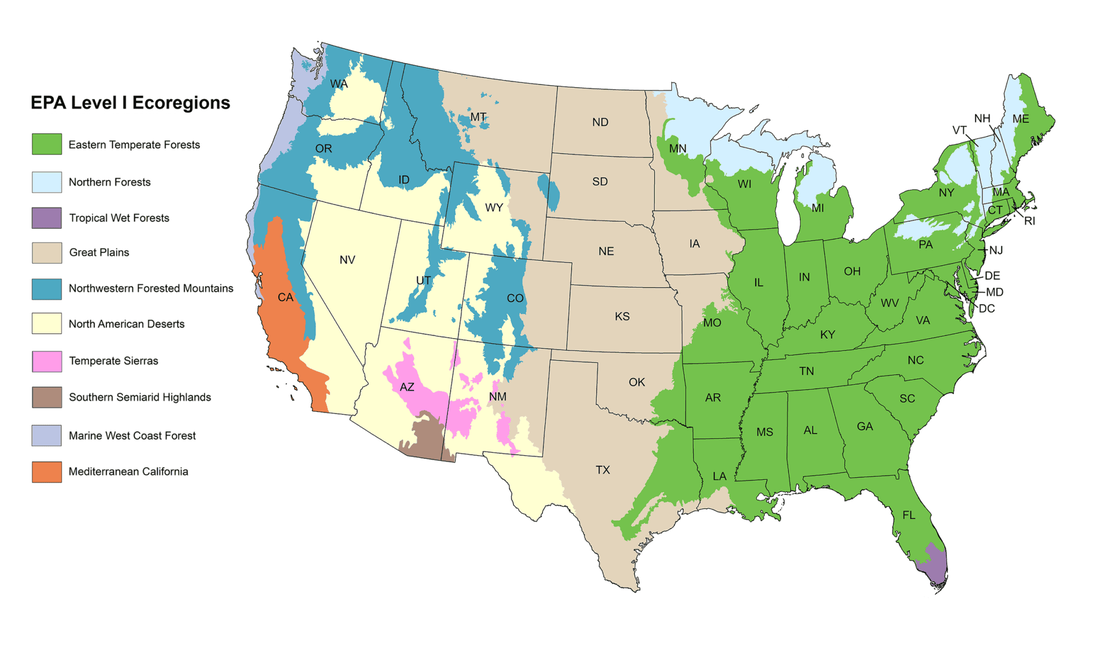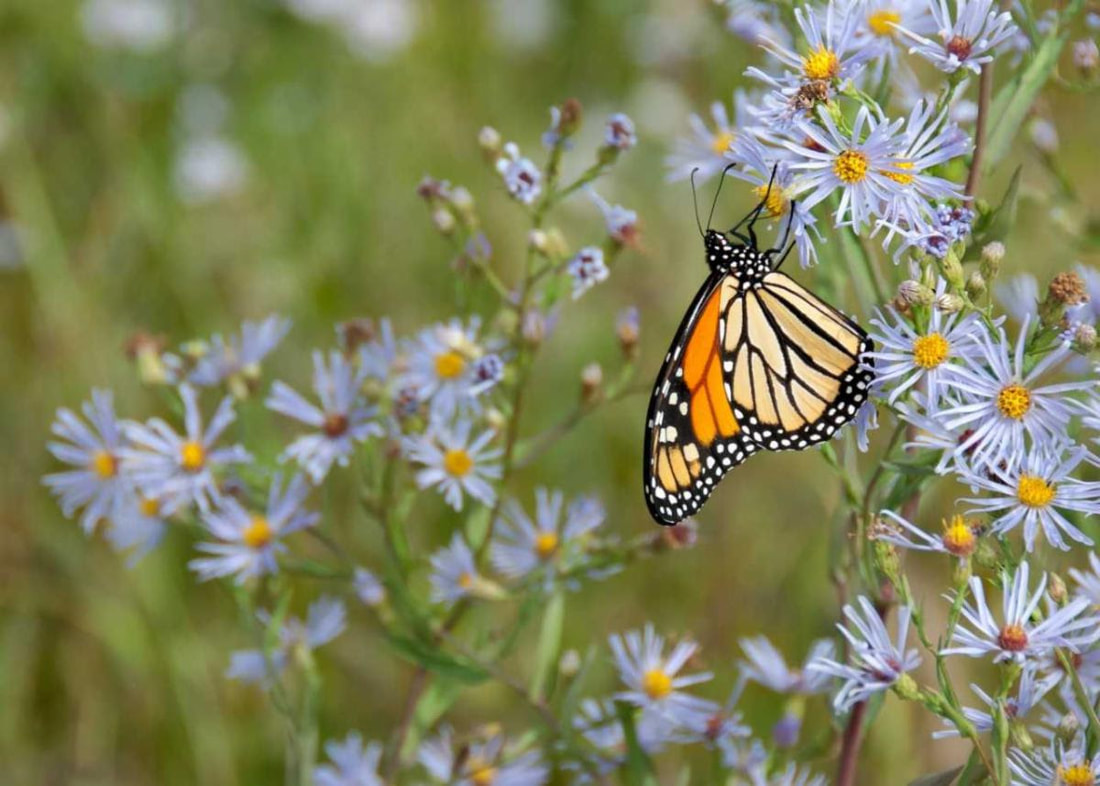|
The goal in gardening ecologically is to garden with plants best adapted to our locale and the wildlife that is here. So an ecological gardener will intentionally select plants that will support that wildlife. Natives are the best choice. They have grown and thrived in their ecoregion for centuries.
Right plant, right place. This is a long-held horticulture practice, and it is at the root of gardening ecologically successfully. The question we should ask is, what would thrive in the natural conditions of this place. Whether it’s wet or dry, sunny or shady, placing plants where they will thrive and require minimal care once established is what we are striving for. Why plant native? The National Wildlife Federation says it best: “Native plants help the environment the most when planted in places that match their growing requirements. They will thrive in the soils, moisture and weather of your region. That means less supplemental watering, which can be wasteful, and pest problems that require toxic chemicals. Native plants also assist in managing rain water runoff and maintain healthy soil as their root systems are deep and keep soil from being compacted.” You may already be growing some native perennials like coneflower, black-eyed susans, yarrow, or milkweed. But don’t limit your palette! There is a vast array of native plants that do well here in SE Wisconsin including trees and shrubs. Here is a list to get you started - just click on Native Plants and enter your zipcode. What if you don’t have a big yard? For small gardening spaces, including decks, patios, and balconies, there are herbaceous native plants that you can grow in container gardens. Check them out here. Keystone Plants There are native plants, and then there are really good native plants called keystone plants. Much research has been done studying which native plants support the most native pollinators in each ecoregion. These keystone plants are essential to our ecosystems. There are two types of keystone plants. Host plants support up to 90% of caterpillar species that in turn support our terrestrial birds enabling them to reproduce. The other group of keystone plants feed both general and specialist native bee populations. For example, the white oak and the black oak trees are the best native trees you could plant because they support the most diverse insect species - 436 different caterpillar species to be exact! Goldenrod (Solidago rigida) is one of the best keystone native perennials we can include in our landscapes because it supports 104 different caterpillar species as well as 43 specialist native bee species. Sunflowers also are at the top of the list supporting 50 specialist bee species! Even growing just one keystone plant can make a huge difference. Here’s a list to get you started. But remember that our ecoregion (Eastern Temperate Forest) covers many zones, so also refer to those specific to your zipcode. If you want to learn more about keystone native plants, listen to this podcast with Doug Tallamy. Next week we will focus on living mulches, and our series will continue each week addressing the following ecological practices: 3. Keep your soil covered 4. Attract beneficial insects 5. Use natural fertilizers Watch for an opportunity to continue the conversation in person here at Burlington Garden Center coming soon. Until then, check out the links below to learn more. LINKS: Eco Regions Map Homegrown National Parks Native Plant Finder
0 Comments
Ecological gardening is a new way to think about gardening. At its core, it strives to mimic and restore our local ecosystems. It’s the art of growing gardens that are suited to our area. It’s also a different way to choose plants that we grow. Instead of selecting plants that only please us, it’s intentionally seeking plants that will support wildlife that already lives in our ecosystem, sustaining it through the four seasons.
So what is an ecoregion? Simply put, an ecoregion is a large area of land containing distinct characteristics allowing natural communities and species to grow. According to the map above, we are in the Eastern Temperate Forest ecoregion which covers quite a large area of the country. Because this ecoregion covers so many states and different hardiness zones, it is broken down into smaller eco regions. Click here to see this map. We are in Level III ecoregion 53, and to be more specific, Level IV 53b. Totally confused? Keep reading. Why garden by ecoregion? Plants are not bound by state lines when it comes to their natural habitats. Using ecoregions as a guide, we can make smarter plant choices. Not only will these native plants have a better success rate, better plant health, and better performance, they will support our local wildlife. The goal in gardening ecologically is to garden with plants best adapted to our locale and the wildlife that is here. If you’d like to read more on this topic, here is an interesting blog post by Doug Tallamy. Next week we will focus on growing the right plants for our spaces, and our series will continue each week addressing the following ecological practices:
Watch for an opportunity to continue the conversation in person here at Burlington Garden Center coming soon. 1/22/2024 0 Comments Intro to Ecological GardeningDo you long for a garden that requires less maintenance, less water, and no chemicals? Do you also want a garden that supports pollinators, wildflowers, more biodiversity and healthier soil?
Ecological gardening may be the answer. It’s been the buzz word as the latest trend, but ecological gardening is not just a trend. It is a way to garden responsibly and intentionally that is becoming a way of life. What exactly is it? Ecological gardening strives to mimic and restore our local ecosystems. It’s the art of growing gardens that are suited to our area. It’s also a different way of thinking. Instead of choosing plants that only please you, it’s intentionally selecting plants that will support wildlife that already lives in our ecosystem, sustaining it through the four seasons. If you’ve read any books by Doug Tallamy, you already know some of the principles and practices of this type of gardening. If you haven’t read them, it’s worth your time to read “Bringing Nature Home” and “Nature’s Best Hope”. Copies will be available for purchase this weekend. We’ll be digging into the five practices of ecological gardening over the next few weeks here in the newsletter.
Watch for an opportunity to continue the conversation in person here at Burlington Garden Center coming soon. |
|
|
STORE INFO
5205 Mormon Road Burlington, WI 53105 262.763.2153 |



